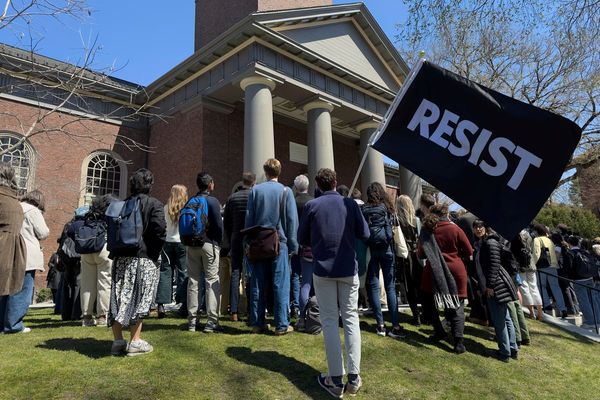The Federal Reserve held its key interest rate steady on Wednesday, confirming that policy is in a holding pattern after three straight interest rate cuts. The Fed cited a "solid" job market while inflation remains "slightly elevated." But Chairman Jerome Powell sounded relatively upbeat on inflation.
The S&P 500 fell moderately in Wednesday stock market action, losing ground ahead of the Fed policy statement and Powell's news conference, then treading water. Fed policy was secondary; Nvidia took a bath after Alibaba became the latest Chinese company to reveal a surprisingly competitive AI model. That's despite chip restrictions, which the Trump administration may consider tightening, according to a Bloomberg News report.
Powell Expects Further Inflation Progress
The S&P 500 initially extended losses after some confusion over the Fed policy statement, which omitted stale language about inflation trending lower. Powell clarified that the trend hasn't deteriorated. In fact, the past two months of inflation data has been good. Yet the Fed's primary 12-month core inflation rate, at 2.8%, has stabilized at a somewhat elevated level.
Powell is expecting further progress because the main reason for still-elevated inflation is housing inflation and that's heading in the right direction, he said.
Labor Market Is 'Solid'
On the other hand, the Fed upgraded its view of the labor market to "solid" after Powell had indicated it was gradually cooling in mid-December. Still, Powell said, there's no indication that the labor market is a source of inflation pressures.
"It's a low-hiring environment," Powell said. However, he added that the break-even hiring rate seems to have fallen as immigration has slowed in recent months. That means it takes fewer hires to keep up with growth in labor force participation.
Fed Is In No Rush To Cut Again
After 100 basis points in rate cuts, Powell said it makes sense for the Fed to move slowly going forward. However, his view is that the Fed's current policy rate, between 4.25% and 4.5%, is still "meaningfully above" the neutral rate. That means policy is restrictive, acting as a headwind to growth and helping to bring down inflation.
Trump Policy Uncertainty
Predicting where the economy goes from here is even trickier than normal because of uncertainty about what President Trump will do with respect to tariffs, fiscal policy, regulation and deportations, Powell said.
"We don't know what will happen," nor how the economy will react, Powell said.
Trump has indicated that new tariffs could be announced by Feb. 1. Powell noted that tariffs didn't boost inflation in 2018 and 2019, and he said it's unclear whether they'll do so this time around.
However, Fed projections released in December bumped up policymakers' median forecast for core inflation in 2025 to 2.5% from 2.2%, which might be less conducive for rate cuts.
Fed Rate-Cut Odds
After the Fed meeting, markets are pricing in just 18% odds of a rate cut at the March 19 meeting, down from 31% on Tuesday. For the May 7 Fed meeting, rate-cut odds slipped to 42% from 51%.
However, markets see a 73% chance of a rate cut on June 18, little changed from 75% on Tuesday. That suggests no real change in the outlook.
Markets are still leaning toward 50 basis points in rate cuts for the year, with steady 39% odds of a single rate cut or fewer.
S&P 500
The S&P 500 lost 0.5% in Wednesday stock market action, closing roughly where it stood ahead of the 2 p.m. Fed policy statement.
The S&P 500 finished 1.3% off its Jan. 23 record closing high and up 4.4% since Election Day.
Be sure to read IBD's The Big Picture column after each trading day to get the latest on the prevailing stock market trend and what it means for your trading decisions.







